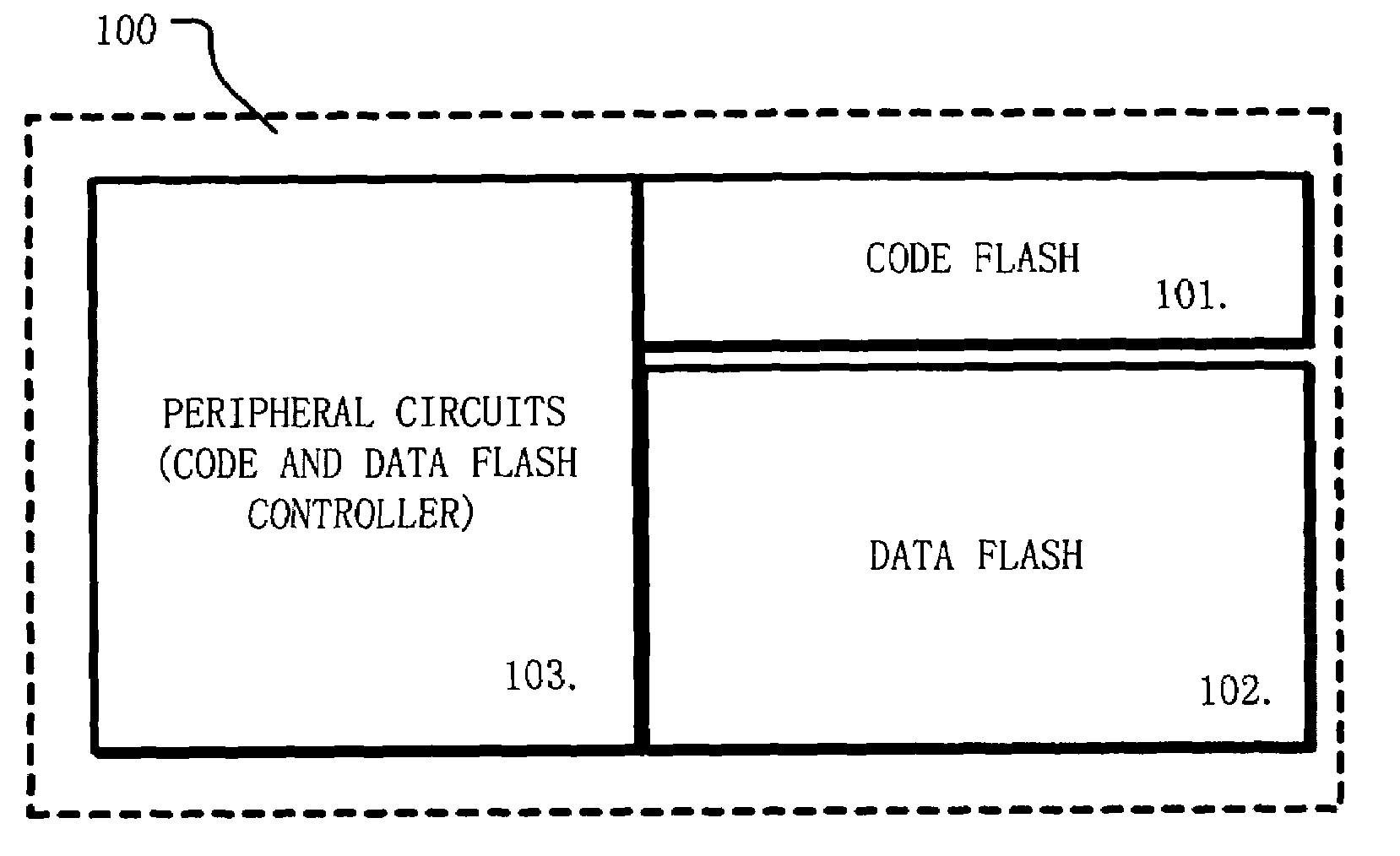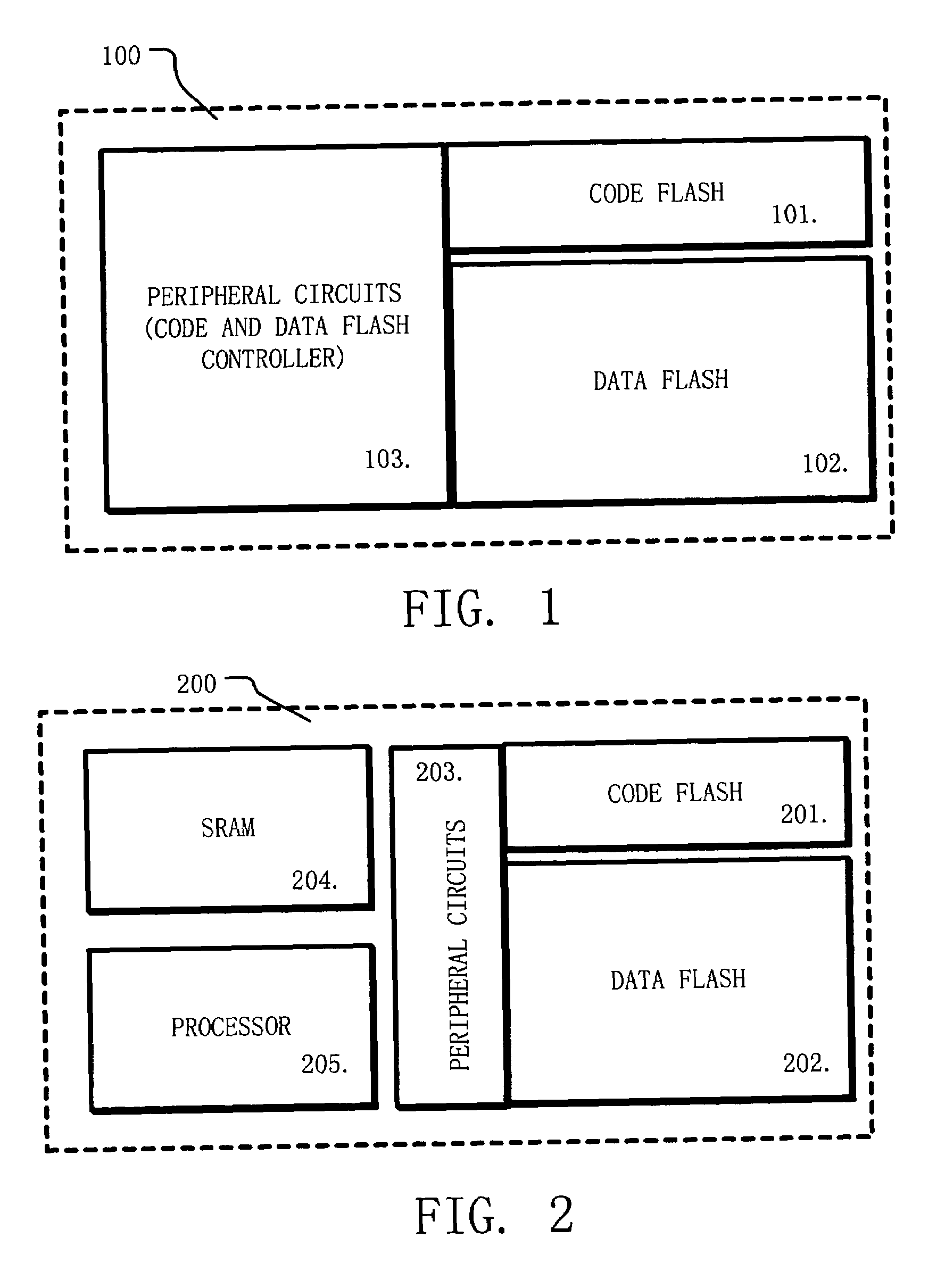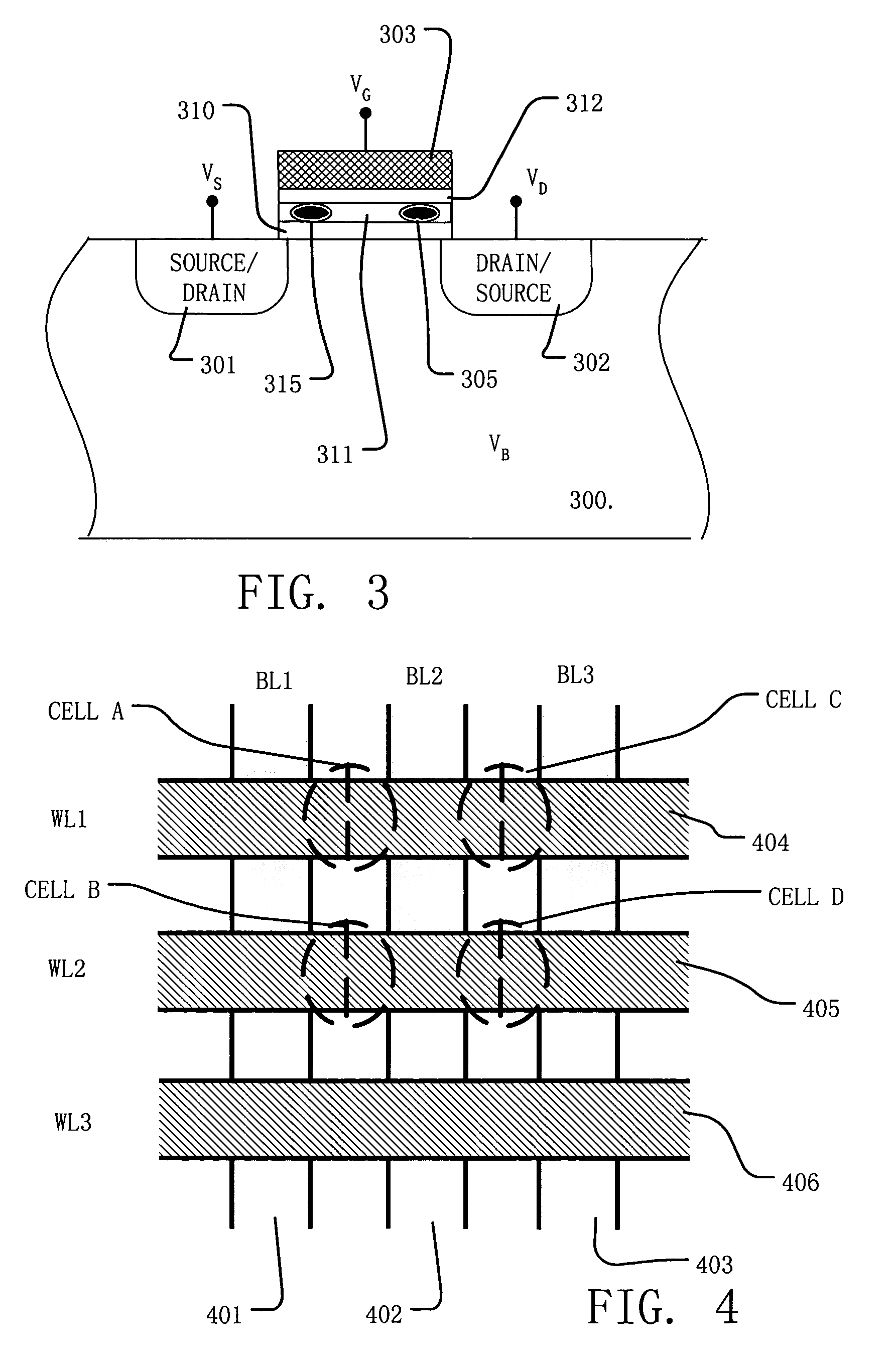Integrated code and data flash memory
a code and data flash technology, applied in the field of integrated circuits, can solve the problems of high design difficulty, low system space on the board, and inability to integrate conventional flash memory technology for both code and data flash purposes, and achieve the effects of low cost, high yield and easy manufacturing
- Summary
- Abstract
- Description
- Claims
- Application Information
AI Technical Summary
Benefits of technology
Problems solved by technology
Method used
Image
Examples
Embodiment Construction
[0025]A detailed description of embodiments of the present invention is provided with reference to FIGS. 1–7.
[0026]FIG. 1 illustrates the basic concept of the present invention. In particular, an integrated circuit 100 comprises a first memory array 101 adapted for code flash applications, and a second memory array 102 adapted for data flash applications. Peripheral circuits 103 on the integrated circuit include a code and data flash controller which execute first and second operation algorithms which are adapted for the patterns of data usage corresponding with code flash and data flash applications. In preferred embodiments, the memory cells in the first array 101 and the second array 102 have substantially the same structure, while the first and second operation algorithms differ to efficiently support different patterns of data usage within a single integrated circuit device.
[0027]The integrated circuit shown in FIG. 1 may include other components not shown in figure. For exampl...
PUM
 Login to View More
Login to View More Abstract
Description
Claims
Application Information
 Login to View More
Login to View More - R&D
- Intellectual Property
- Life Sciences
- Materials
- Tech Scout
- Unparalleled Data Quality
- Higher Quality Content
- 60% Fewer Hallucinations
Browse by: Latest US Patents, China's latest patents, Technical Efficacy Thesaurus, Application Domain, Technology Topic, Popular Technical Reports.
© 2025 PatSnap. All rights reserved.Legal|Privacy policy|Modern Slavery Act Transparency Statement|Sitemap|About US| Contact US: help@patsnap.com



